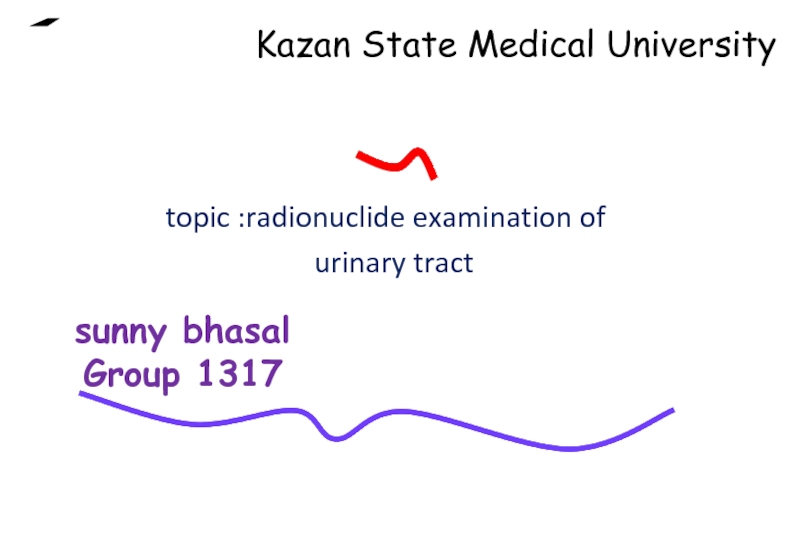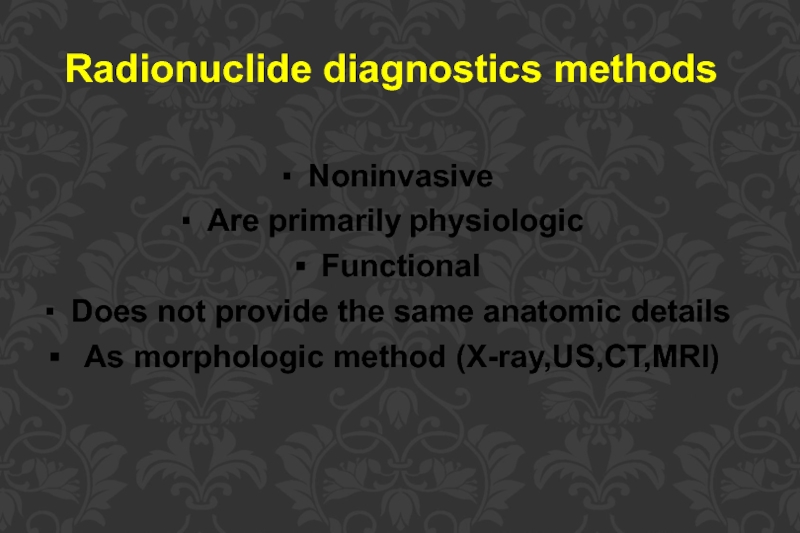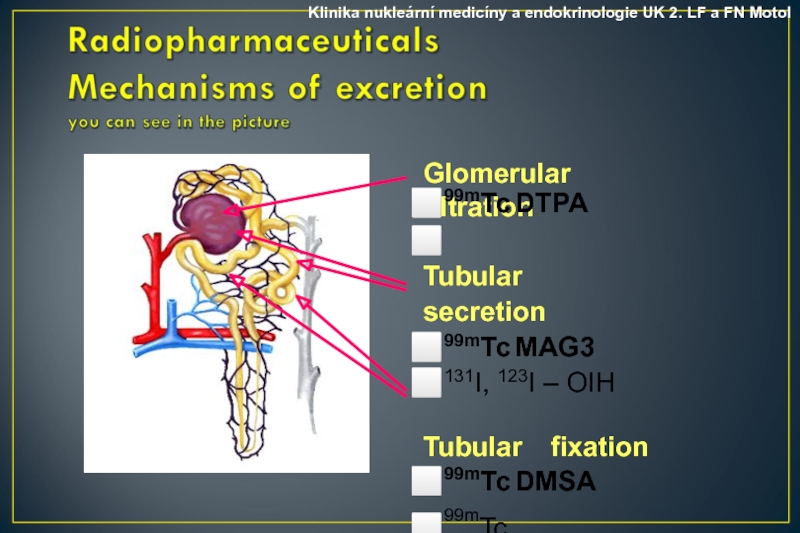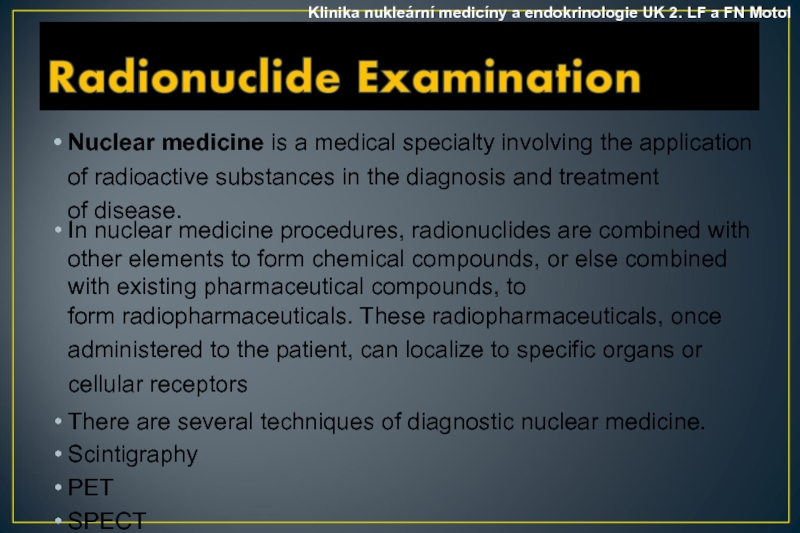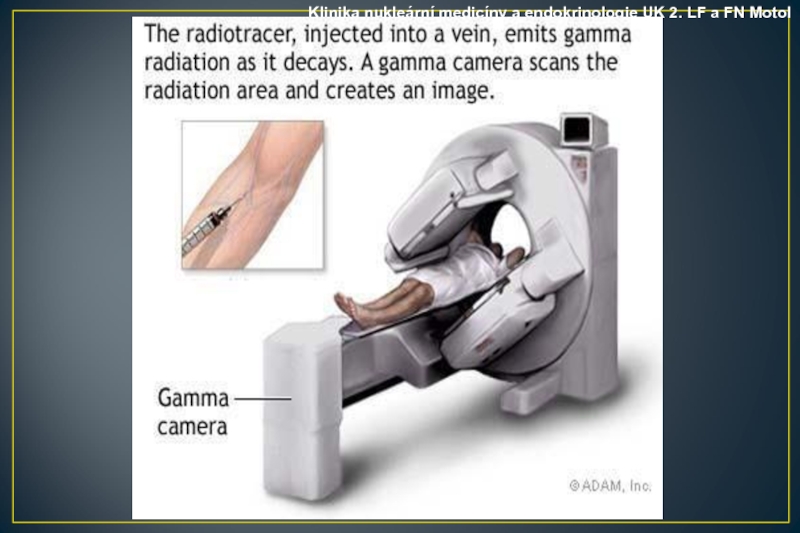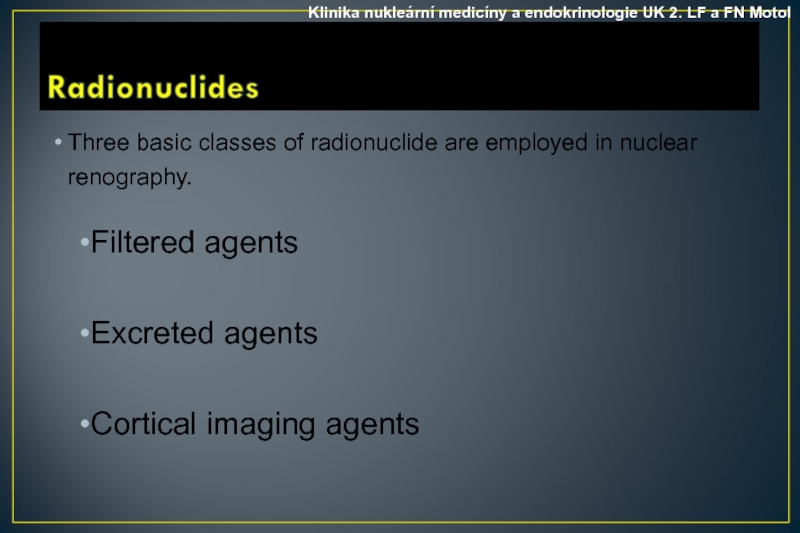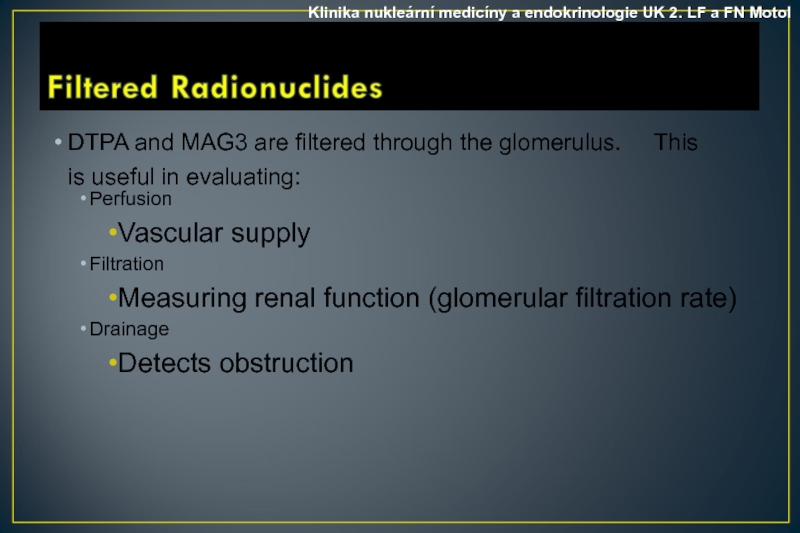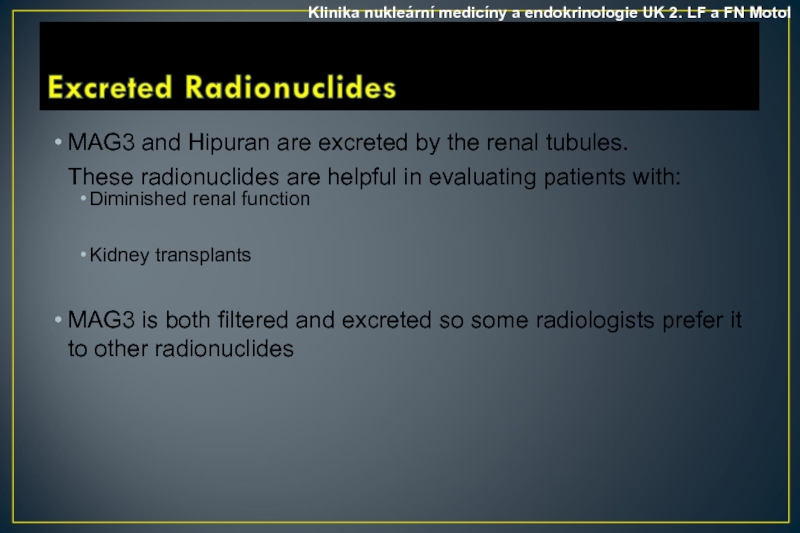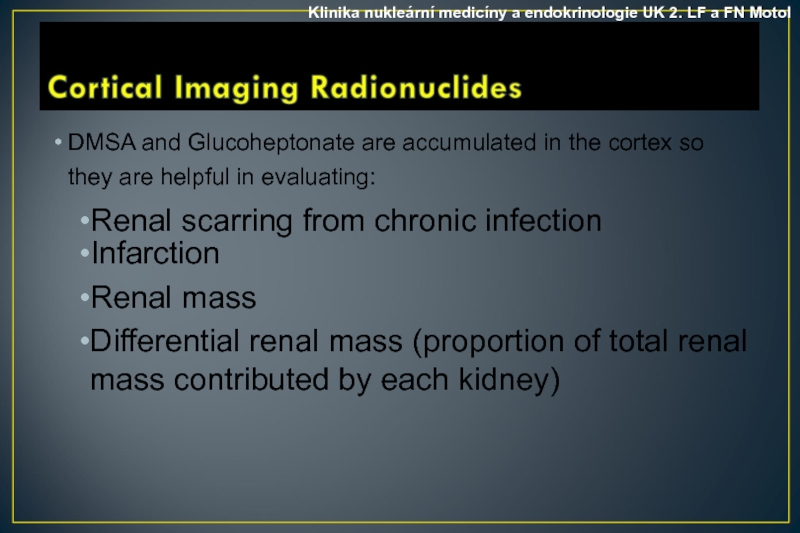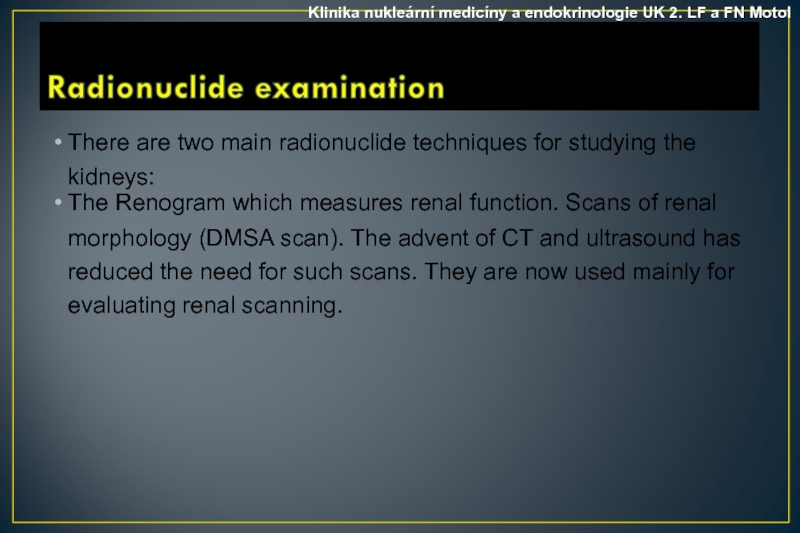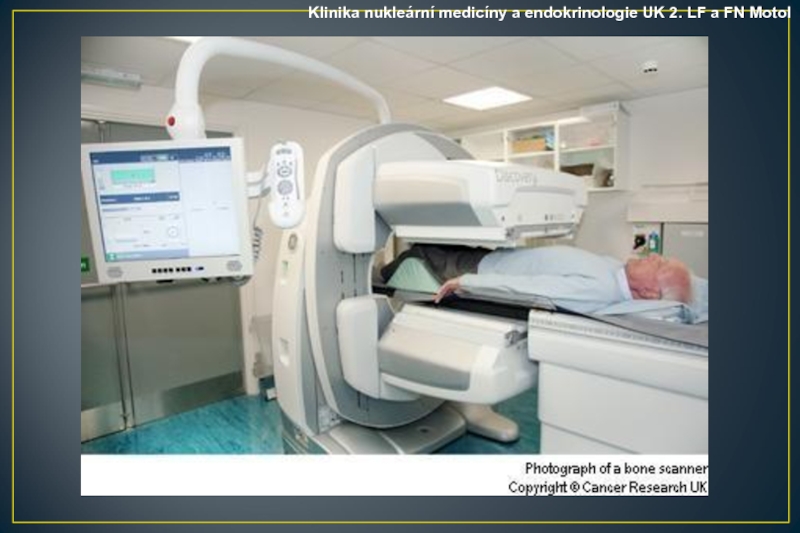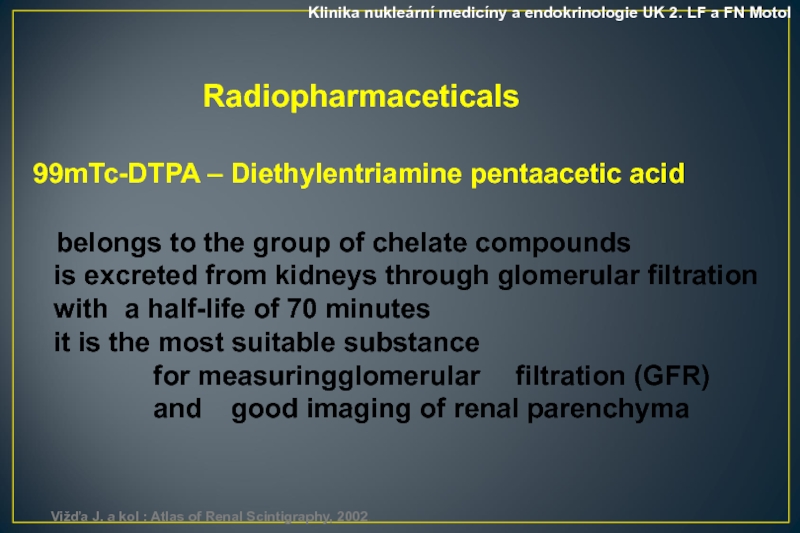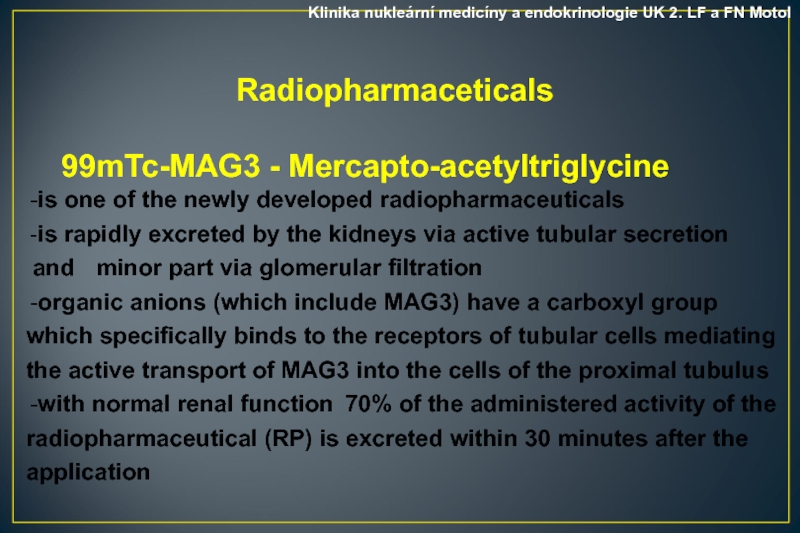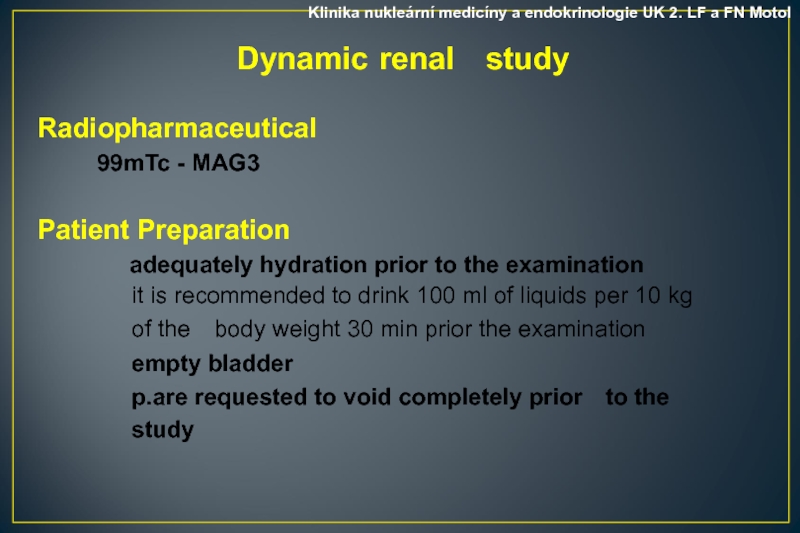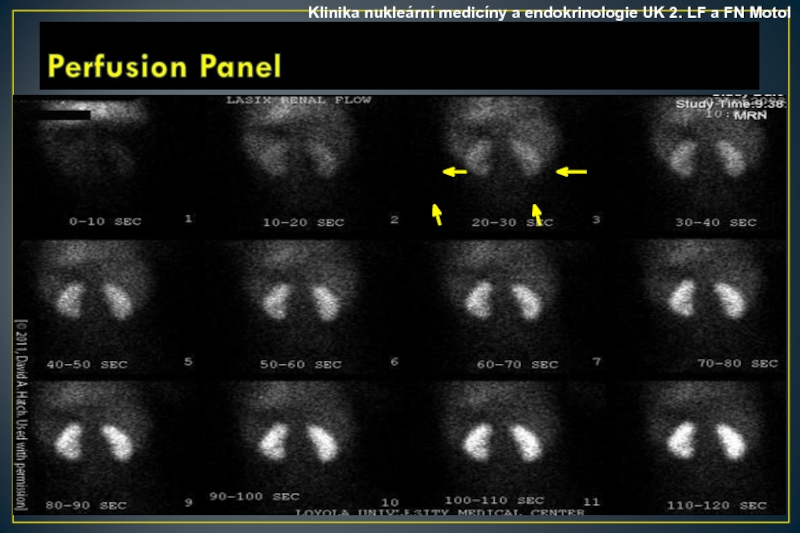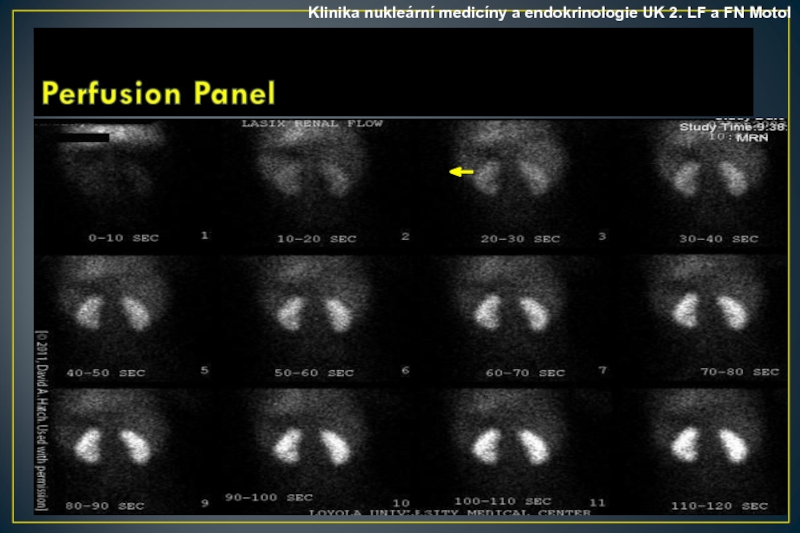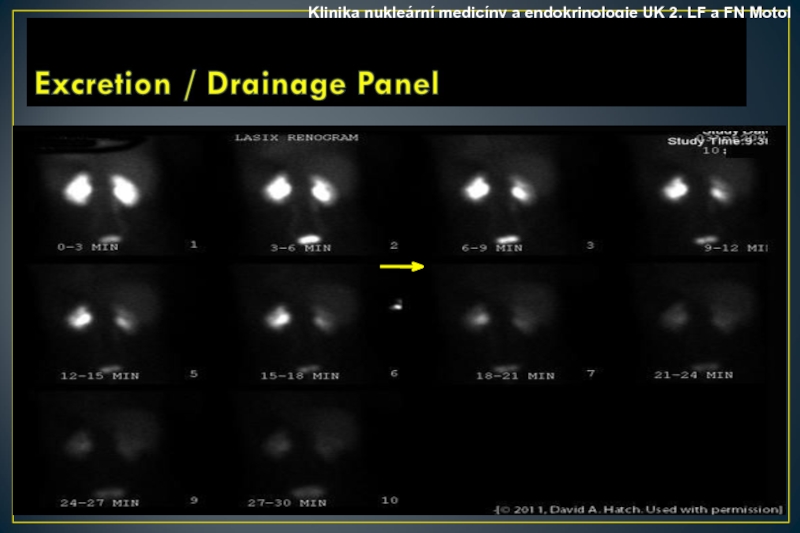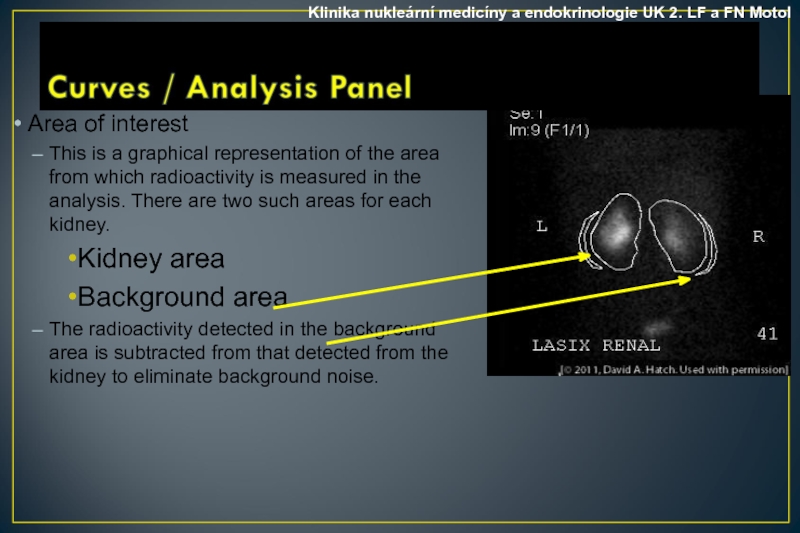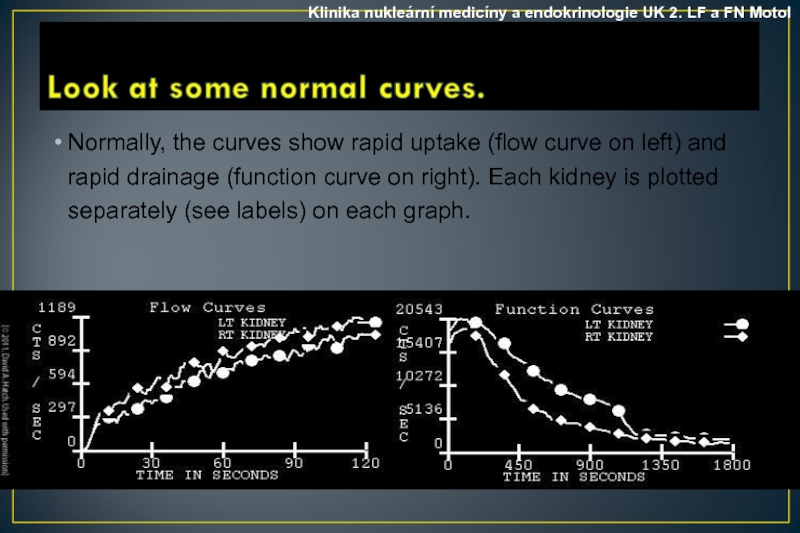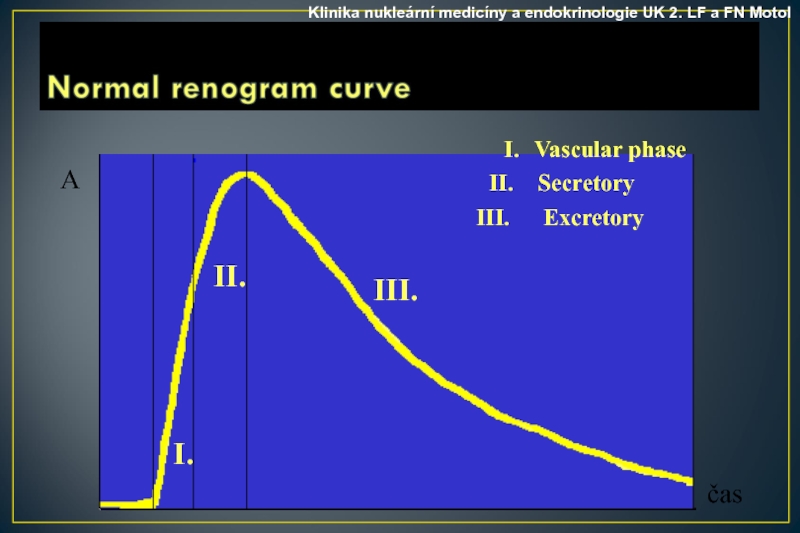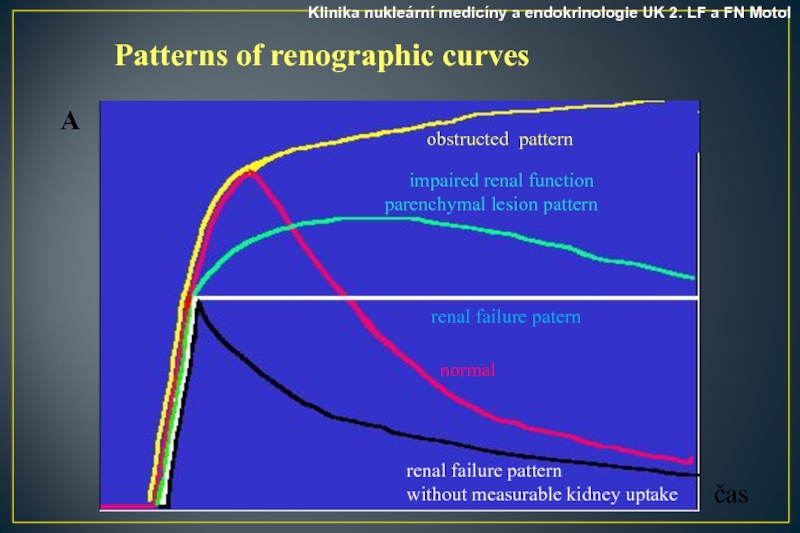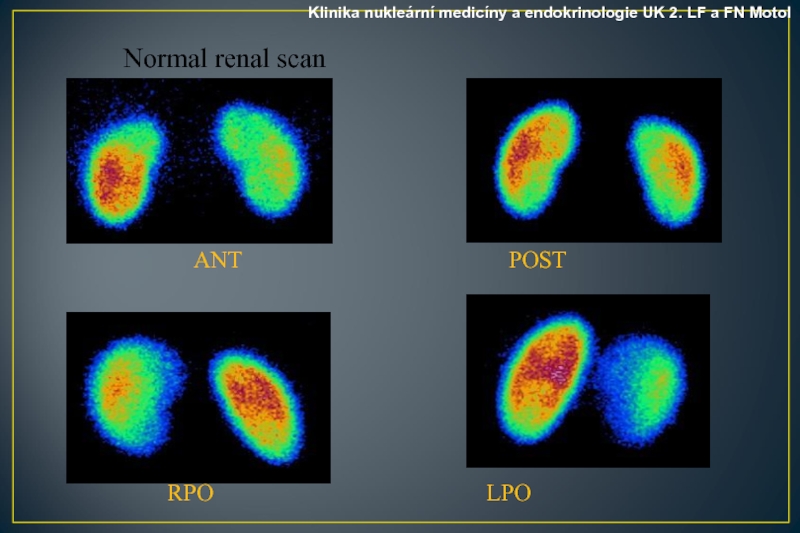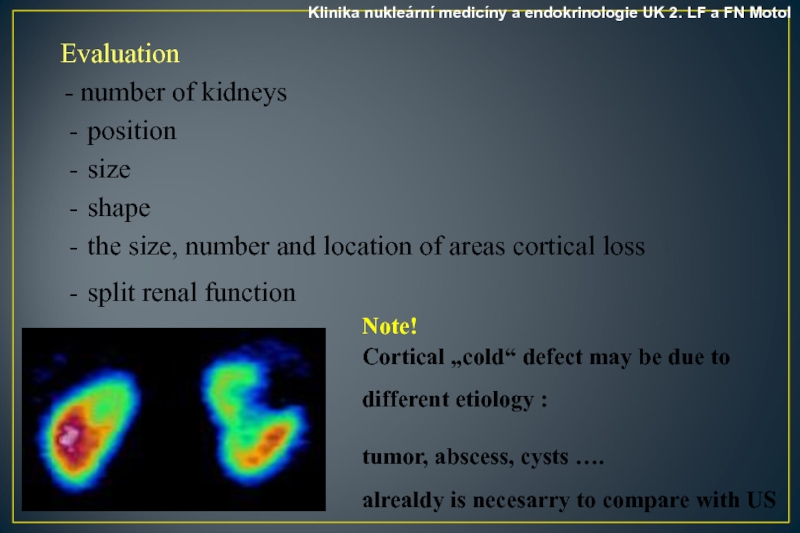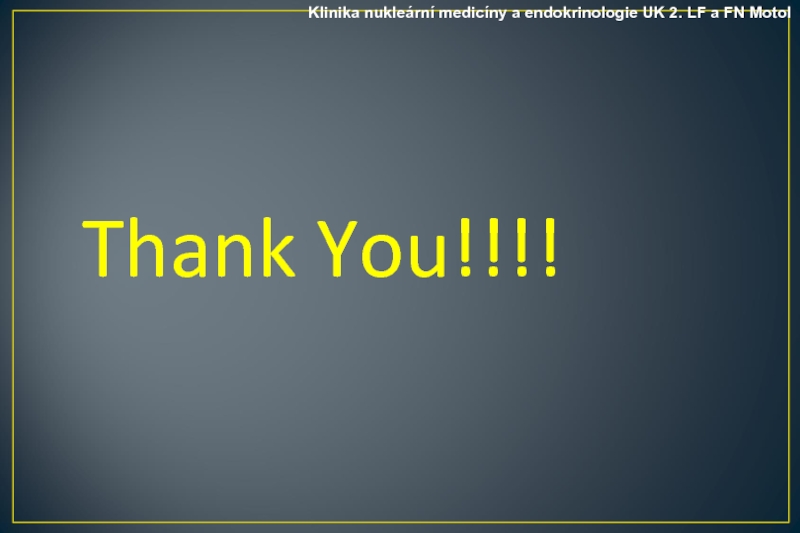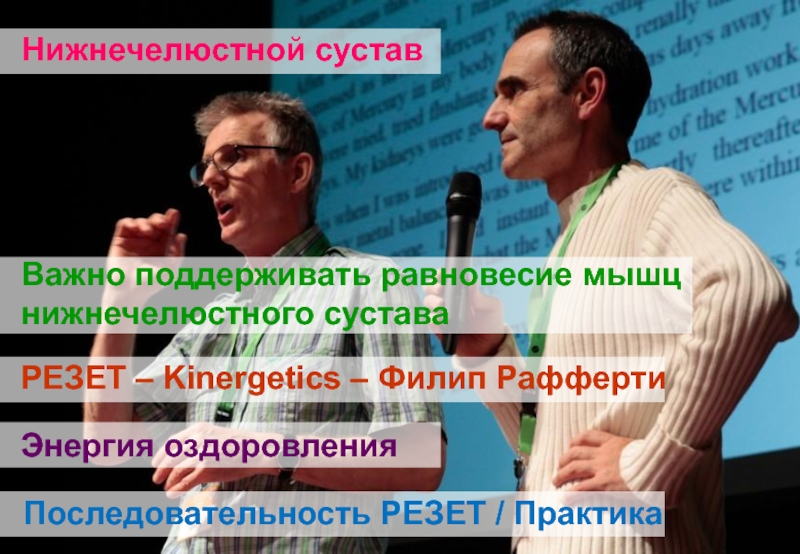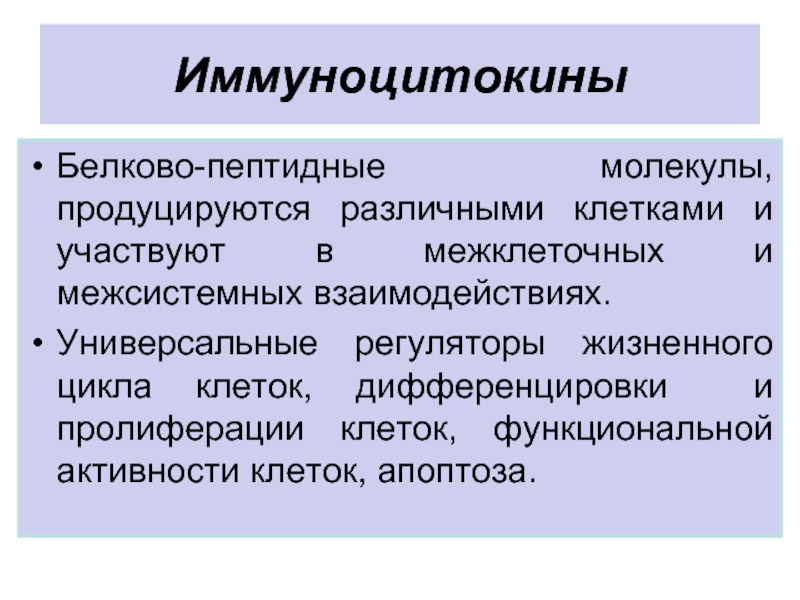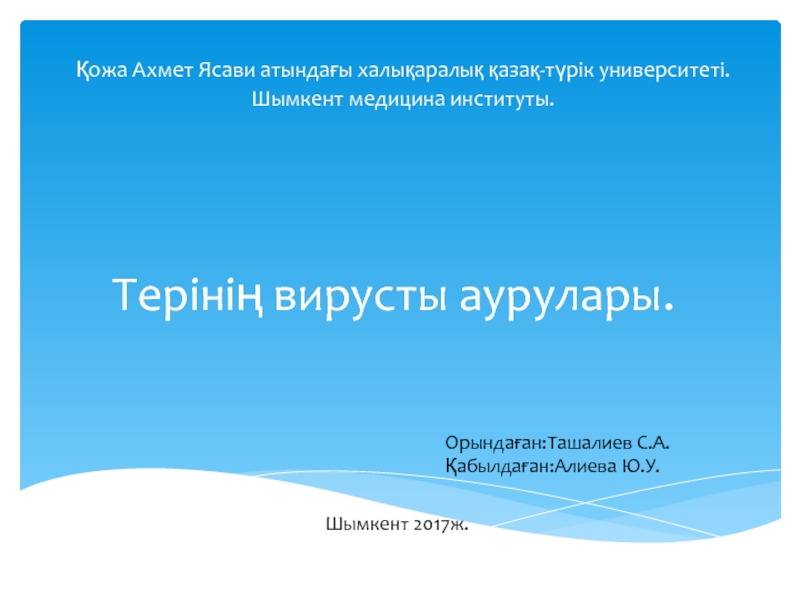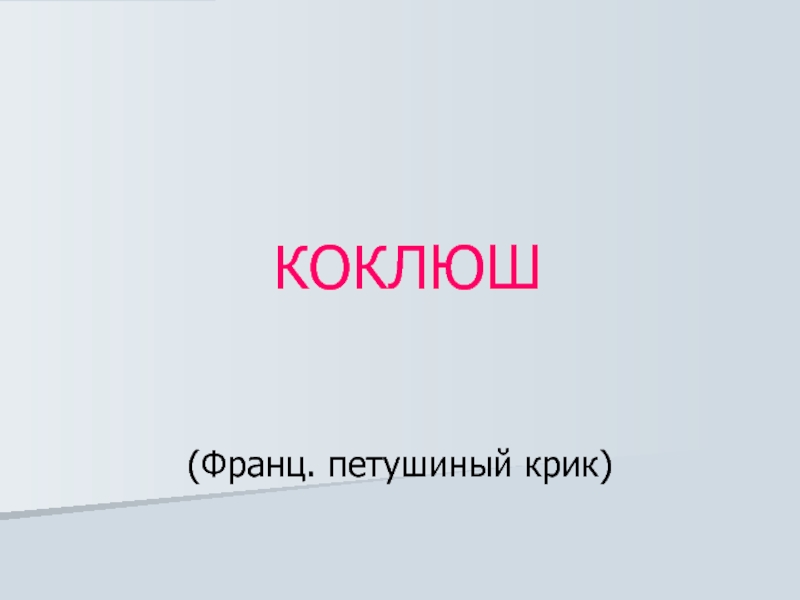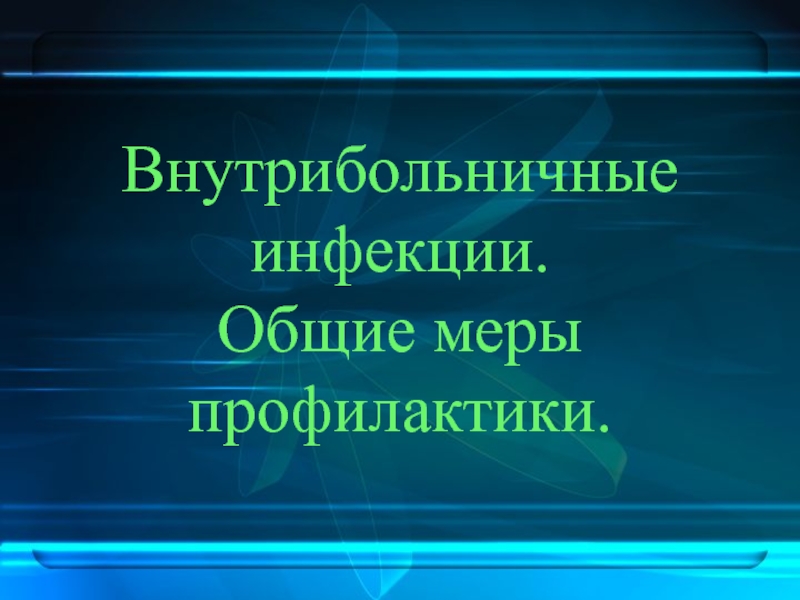- Главная
- Разное
- Дизайн
- Бизнес и предпринимательство
- Аналитика
- Образование
- Развлечения
- Красота и здоровье
- Финансы
- Государство
- Путешествия
- Спорт
- Недвижимость
- Армия
- Графика
- Культурология
- Еда и кулинария
- Лингвистика
- Английский язык
- Астрономия
- Алгебра
- Биология
- География
- Детские презентации
- Информатика
- История
- Литература
- Маркетинг
- Математика
- Медицина
- Менеджмент
- Музыка
- МХК
- Немецкий язык
- ОБЖ
- Обществознание
- Окружающий мир
- Педагогика
- Русский язык
- Технология
- Физика
- Философия
- Химия
- Шаблоны, картинки для презентаций
- Экология
- Экономика
- Юриспруденция
Radionuclide examination of urinary tract презентация
Содержание
- 1. Radionuclide examination of urinary tract
- 2. Radionuclide diagnostics methods Noninvasive Are primarily physiologic
- 3. Klinika nukleární medicíny a endokrinologie UK 2.
- 4. Klinika nukleární medicíny a endokrinologie UK 2.
- 5. Klinika nukleární medicíny a endokrinologie UK 2. LF a FN Motol
- 6. Klinika nukleární medicíny a endokrinologie UK 2.
- 7. Klinika nukleární medicíny a endokrinologie UK 2.
- 8. Klinika nukleární medicíny a endokrinologie UK 2.
- 9. Klinika nukleární medicíny a endokrinologie UK 2.
- 10. Klinika nukleární medicíny a endokrinologie UK 2.
- 11. Klinika nukleární medicíny a endokrinologie UK 2. LF a FN Motol
- 12. Klinika nukleární medicíny a endokrinologie UK 2.
- 13. Klinika nukleární medicíny a endokrinologie UK 2.
- 14. Klinika nukleární medicíny a endokrinologie UK 2.
- 15. Klinika nukleární medicíny a endokrinologie UK 2.
- 16. Klinika nukleární medicíny a endokrinologie UK 2. LF a FN Motol
- 17. Klinika nukleární medicíny a endokrinologie UK 2. LF a FN Motol
- 18. Klinika nukleární medicíny a endokrinologie UK 2.
- 19. Klinika nukleární medicíny a endokrinologie UK 2.
- 20. Klinika nukleární medicíny a endokrinologie UK 2.
- 21. Klinika nukleární medicíny a endokrinologie UK 2.
- 22. Klinika nukleární medicíny a endokrinologie UK 2.
- 23. Klinika nukleární medicíny a endokrinologie UK 2.
- 24. Klinika nukleární medicíny a endokrinologie UK 2. LF a FN Motol Thank You!!!!
Слайд 1
Kazan State Medical University
topic :radionuclide examination of urinary tract
sunny bhasal Group
Слайд 2
Radionuclide diagnostics methods
Noninvasive
Are primarily physiologic
Functional
Does not provide the same anatomic details
As morphologic
Слайд 3Klinika nukleární medicíny a endokrinologie UK 2. LF a FN Motol
Glomerular filtration
⬜ 99mTc DTPA
⬜
Tubular secretion
⬜ 99mTc MAG3
⬜ 131I,
Tubular fixation
⬜ 99mTc DMSA
⬜ 99mTc
glucoheptonate
Слайд 4Klinika nukleární medicíny a endokrinologie UK 2. LF a FN Motol
Nuclear
of disease.
In nuclear medicine procedures, radionuclides are combined with other elements to form chemical compounds, or else combined with existing pharmaceutical compounds, to
form radiopharmaceuticals. These radiopharmaceuticals, once administered to the patient, can localize to specific organs or cellular receptors
There are several techniques of diagnostic nuclear medicine.
Scintigraphy
PET
SPECT
Слайд 6Klinika nukleární medicíny a endokrinologie UK 2. LF a FN Motol
Three
•Filtered agents
•Excreted agents
•Cortical imaging agents
Слайд 7Klinika nukleární medicíny a endokrinologie UK 2. LF a FN Motol
DTPA
Perfusion
Vascular supply
Filtration
Measuring renal function (glomerular filtration rate)
Drainage
Detects obstruction
Слайд 8Klinika nukleární medicíny a endokrinologie UK 2. LF a FN Motol
MAG3
Diminished renal function
Kidney transplants
MAG3 is both filtered and excreted so some radiologists prefer it to other radionuclides
Слайд 9Klinika nukleární medicíny a endokrinologie UK 2. LF a FN Motol
DMSA
•Renal scarring from chronic infection
•Infarction
•Renal mass
•Differential renal mass (proportion of total renal mass contributed by each kidney)
Слайд 10Klinika nukleární medicíny a endokrinologie UK 2. LF a FN Motol
There
The Renogram which measures renal function. Scans of renal
morphology (DMSA scan). The advent of CT and ultrasound has reduced the need for such scans. They are now used mainly for evaluating renal scanning.
Слайд 12Klinika nukleární medicíny a endokrinologie UK 2. LF a FN Motol
Radiopharmaceticals
99mTc-DTPA
belongs to the group of chelate compounds
is excreted from kidneys through glomerular filtration with a half-life of 70 minutes
it is the most suitable substance
for measuring glomerular filtration (GFR) and good imaging of renal parenchyma
Vižďa J. a kol : Atlas of Renal Scintigraphy, 2002.
Слайд 13Klinika nukleární medicíny a endokrinologie UK 2. LF a FN Motol
Radiopharmaceticals
99mTc-MAG3
-is one of the newly developed radiopharmaceuticals
-is rapidly excreted by the kidneys via active tubular secretion and minor part via glomerular filtration
-organic anions (which include MAG3) have a carboxyl group which specifically binds to the receptors of tubular cells mediating the active transport of MAG3 into the cells of the proximal tubulus
-with normaI renal function 70% of the administered activity of the radiopharmaceutical (RP) is excreted within 30 minutes after the application
Слайд 14Klinika nukleární medicíny a endokrinologie UK 2. LF a FN Motol
Dynamic renal study
Radiopharmaceutical
99mTc
Patient Preparation
adequately hydration prior to the examination
it is recommended to drink 100 ml of liquids per 10 kg of the body weight 30 min prior the examination empty bladder
p.are requested to void completely prior to the study
Слайд 18Klinika nukleární medicíny a endokrinologie UK 2. LF a FN Motol
Area
This is a graphical representation of the area from which radioactivity is measured in the analysis. There are two such areas for each kidney.
Kidney area
Background area
The radioactivity detected in the background area is subtracted from that detected from the kidney to eliminate background noise.
Слайд 19Klinika nukleární medicíny a endokrinologie UK 2. LF a FN Motol
Normally,
Слайд 20Klinika nukleární medicíny a endokrinologie UK 2. LF a FN Motol
A
II.
III.
Vascular
Secretory
Excretory
I.
čas
Слайд 21Klinika nukleární medicíny a endokrinologie UK 2. LF a FN Motol
A
čas
normal
obstructed
impaired renal function parenchymal lesion pattern
renal failure pattern
without measurable kidney uptake
renal failure patern
Patterns of renographic curves
Слайд 22Klinika nukleární medicíny a endokrinologie UK 2. LF a FN Motol
ANT
POST
RPO
LPO
Normal
Слайд 23Klinika nukleární medicíny a endokrinologie UK 2. LF a FN Motol
Evaluation
-
position
size
shape
the size, number and location of areas cortical loss
split renal function
Note!
Cortical „cold“ defect may be due to different etiology :
tumor, abscess, cysts ….
alrealdy is necesarry to compare with US
